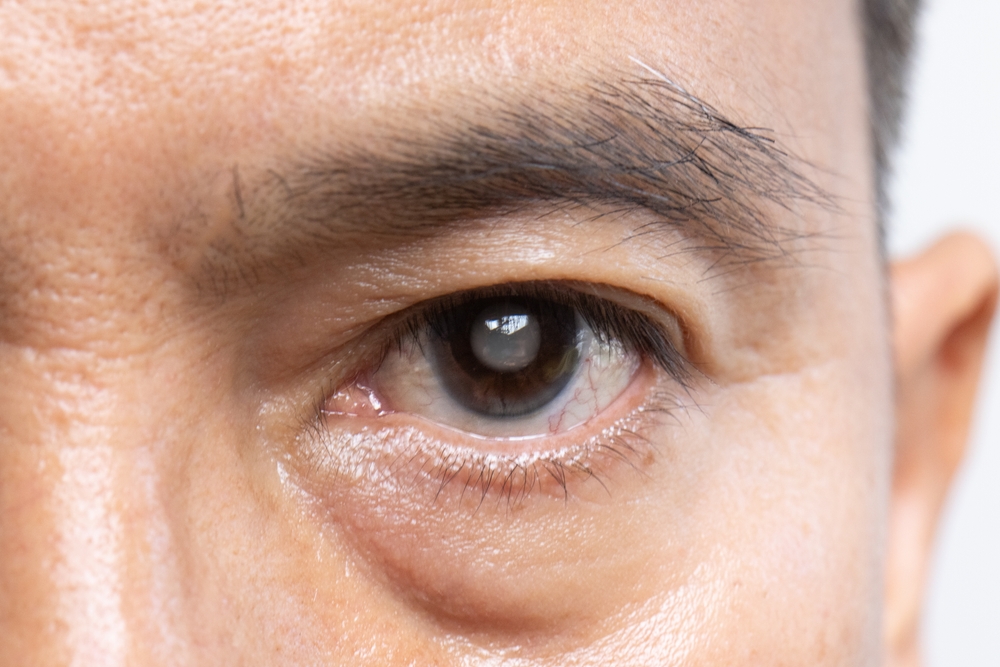
Cataracts are the result of a clear lens inside your eye becoming cloudy. This lens helps focus light on your retina, allowing you to see clearly. Over time, proteins in the lens start to break down and clump together. These clumps block or scatter light, causing blurry or dim vision.
This clouding usually develops gradually as you age. Most people over 60 will develop some degree of cataracts. But age is not the only cause.
Deeper Look at Cataract Causes
As the lens ages, it loses water and gains protein. This changes the lens’s structure and clarity. The proteins can stick together, creating cloudy areas that block light. Exposure to ultraviolet (UV) rays from sunlight damages lens proteins. UV damage accumulates over time, increasing the risk of cataracts. Wearing sunglasses that block UV rays helps protect your eyes.
Smoking adds harmful chemicals that damage eye tissues. This speeds up protein clumping in the lens. Quitting smoking reduces your risk and benefits your overall health. Heavy alcohol use also raises cataract chances.
Certain health conditions affect cataract risk. Diabetes, for example, causes changes in blood sugar that harm the lens. Poor blood sugar control worsens this risk. Eye injuries and surgeries can cause cataracts earlier than usual. Trauma or inflammation can cause the lens to become cloudy. Long-term use of steroids, taken by mouth or eye drops, may also cause cataracts.
Some cataracts are present at birth, but these are rare and usually detected in childhood.
How to Spot Early Signs of Cataracts
Cataracts start with small changes that gradually affect your vision. Early symptoms may be easy to miss, but paying attention can help.
Blurred or cloudy vision is common. It might feel like looking through fog or frosted glass. It may be harder to see fine details or read small print.
Colors may look faded or yellowed. Bright, vibrant colors seem dull or less intense.
You might notice halos or glare around lights. This can make night driving difficult or dangerous. Bright sunlight may feel uncomfortable or glaring.
Double vision in one eye can appear. This means you see two images instead of one. It happens because light scatters differently through the cloudy lens.
Your prescription for contact lenses or glasses can change frequently. Cataracts cause fluctuating vision, leading to frequent adjustments.
If you experience these signs, schedule an eye exam. Early diagnosis allows your doctor to monitor changes and plan your care.
How Cataracts Impact Daily Life
As cataracts worsen, daily activities become harder. Reading, cooking, or watching TV may cause eye strain. Bright lights or glare from lamps can increase discomfort. Driving, especially at night, can be a daunting experience.
People often feel frustrated or anxious about worsening vision. These feelings are normal and understandable. Talking with your doctor can provide reassurance and options. Many people have successful cataract surgery that restores clear vision.
When Cataract Surgery Is Needed
Eye doctors perform surgery to remove the cloudy lens and then put in a clear artificial lens in its place. It is recommended when cataracts interfere with daily life. The surgery is safe, and vision usually improves quickly. Your doctor will guide you through the process and recovery.
For more on cataracts, visit Advanced Family Eye Care at our Broken Arrow or Wagoner, Oklahoma, offices. Call (918) 279-8830 or (918) 485-2123 to schedule an appointment today.
Sources:
https://www.mayoclinic.org/diseases-conditions/cataracts/symptoms-causes/syc-20353790
https://www.nei.nih.gov/learn-about-eye-health/eye-conditions-and-diseases/cataracts








